The entry to the site is critical to the public image of the development. Emphasize the main entrance and place central and shared facilities there if possible. Respect the street and locate buildings on the site so that they reinforce street frontages.
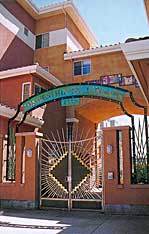
The entrance to this courtyard housing in Oakland, California - a sunburst image created by a local ironworker - creates an energetic, positive image for the entire development. The manager's office, childcare center and community room are located on each side of the entry.
(HismenHin-nu Terrace)
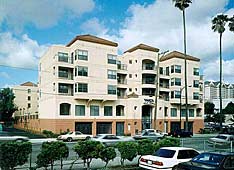
The entrance to this San Jose, California apartment building is two stories high, making it a prominent feature of the façade and clearly indicating where pedestrians come into the complex. Note how the two small roofs on either side of the entrance mimic and reinforce the main roofs of the building.
(YWCA Villa Nueva)

The entrance to this courtyard building in Seattle is clearly defined by a small pavilion which also provides covered access to the parking garage below the courtyard.
(Cascade Court Apartments)
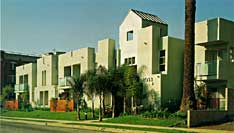
The entrance to this Los Angeles development is simply and clearly defined by a "popped up" pavilion reinforced by a row of trees along the entrance walk.
(Yorkshire Terrace)

A large archway provides a dramatic point of entry to this Boston property.
(Langham Court)
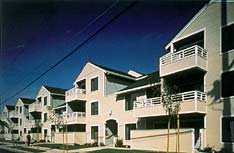
Entrances to these San Jose, California apartments are evenly spaced along the building, providing numerous points of entry while maintaining a strong and continuous presence along the street.
(Paula Avenue Apartments)
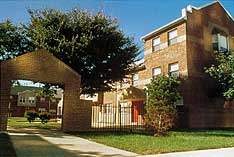
A simple wall and fence combination ties the two wings of this Philadelphia development together and, at the same time, clearly defines the entry to the site.
(University City Family Housing)
